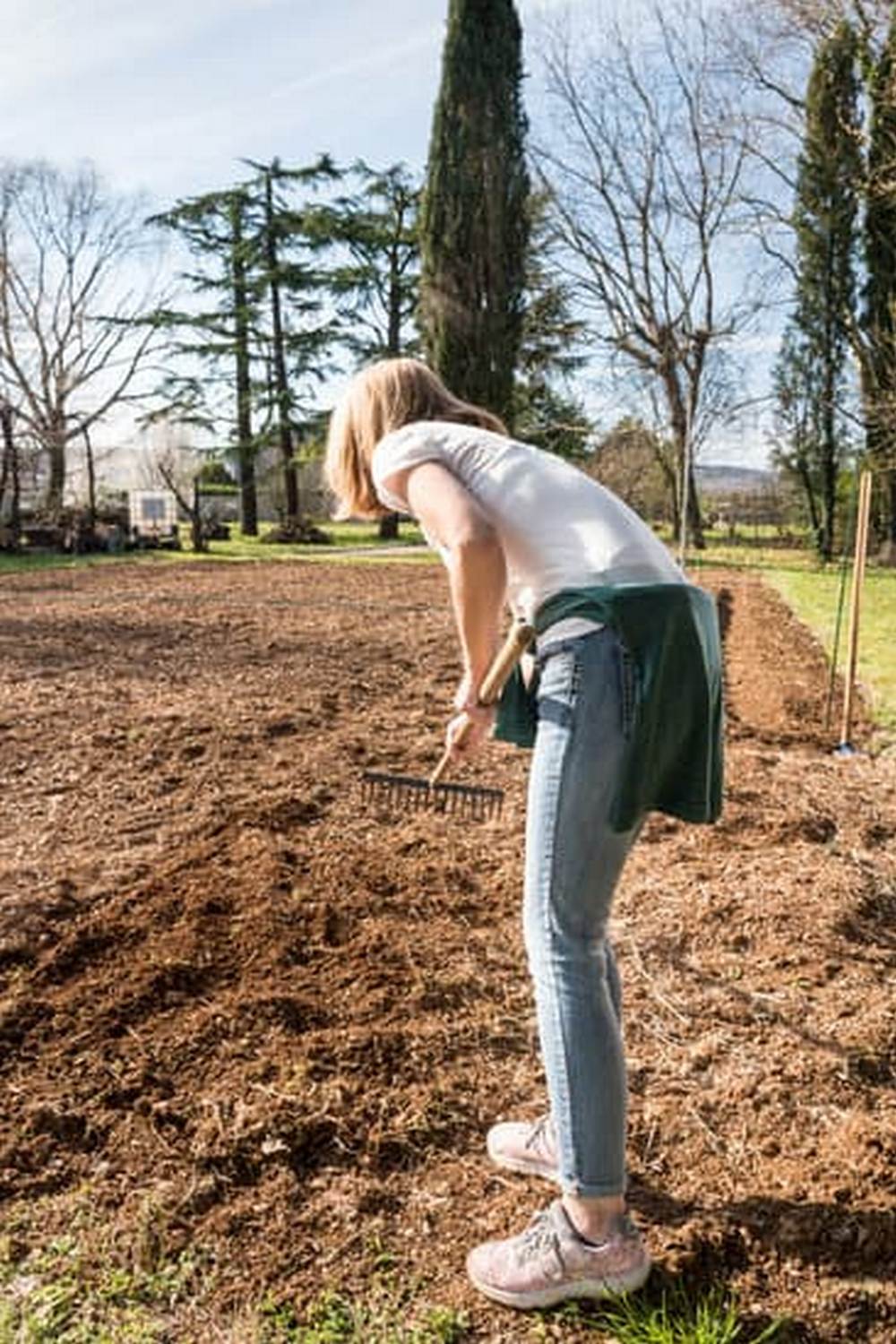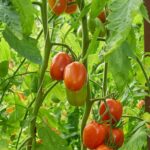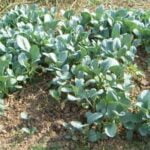Pesticide use is a topic that has raised concerns among gardeners, especially when it comes to growing vegetables. As more and more people turn to home gardening for fresh produce, it becomes crucial to ensure the safety and well-being of both the plants and those who consume them. This brings us to the question: Is bifenthrin safe for vegetable gardens?
In this article, we will explore the benefits and risks associated with using bifenthrin as a pesticide in vegetable gardens. We aim to provide you with a comprehensive understanding of its usage, potential side effects, regulations, impact on vegetables, alternative methods, best practices, and expert opinions/research studies.
Safety should always be a top priority when using pesticides in any garden setting. Vegetable gardens are particularly important since they provide food directly consumed by humans. By delving into the world of bifenthrin and its specific connection to vegetable gardens, we hope to equip you with the knowledge necessary to make an informed decision about whether or not to use this pesticide in your own garden.
Whether you are an experienced gardener or a novice grower, this article will serve as a valuable resource for understanding the safety considerations surrounding bifenthrin in vegetable gardens. Let’s dive into the world of pesticide safety and shed light on whether bifenthrin is truly safe for cultivating healthy and vibrant vegetable crops.
What is bifenthrin and how does it work
Bifenthrin is a synthetic pyrethroid insecticide widely used in pest control, including vegetable gardens. It is known for its effectiveness against a wide range of pests such as aphids, beetles, caterpillars, mites, and spiders. Bifenthrin works by targeting the nervous systems of these pests, disrupting their normal function and ultimately leading to their death.
The chemical structure of bifenthrin makes it highly stable and resistant to degradation by light and heat. This characteristic contributes to its long-lasting control of pests in vegetable gardens. Bifenthrin comes in various formulations such as liquid concentrates, granules, and dusts, allowing for ease of use and application.
When applied correctly and according to label instructions, bifenthrin has been shown to be an effective tool for pest management in vegetable gardens. Studies have demonstrated its efficacy in reducing crop damage caused by various pests, leading to increased yield and quality of vegetables. Proper timing and frequency of application are essential factors in maximizing the effectiveness of bifenthrin.
However, it is important to note that like any pesticide, bifenthrin does carry potential risks and side effects that need to be considered. These risks primarily stem from its toxicity to non-target organisms such as bees, fish, birds, and other beneficial insects. Bifenthrin can be highly toxic to bees if they come into direct contact with treated foliage or flowers during application or shortly after.
To mitigate these risks, it is crucial to follow safety guidelines when using bifenthrin in vegetable gardens. Some best practices include avoiding direct application on flowering plants while they are blooming or spraying early morning or late evening when bees are less active. Additionally, minimizing drift during application can also help reduce the exposure of non-target organisms.
In summary, bifenthrin is a widely used insecticide known for its efficacy against various pests found in vegetable gardens. When used responsibly and following safety guidelines, bifenthrin can be an effective tool in pest control strategies. However, it is essential to be aware of the potential risks associated with this chemical and take appropriate precautions to minimize its impact on non-target organisms.
Potential risks and side effects of bifenthrin
Bifenthrin is a widely used pesticide in vegetable gardens due to its effectiveness in controlling pests. However, it is important to consider the potential risks and side effects associated with its use. While bifenthrin can be an effective tool for pest control, it is crucial to understand the possible dangers and health concerns before using it in your vegetable garden.
One of the main concerns regarding bifenthrin is its toxicity to humans and other non-target organisms. Bifenthrin belongs to a group of pesticides known as pyrethroids, which are synthetic versions of pyrethrins – natural insecticides derived from chrysanthemum flowers.
Although pyrethroids have been deemed safe for use on vegetables by regulatory agencies at recommended levels, there are still risks associated with their exposure. Studies have shown that acute exposure to bifenthrin can cause symptoms such as skin irritation, eye irritation, respiratory distress, dizziness, nausea, and vomiting.
Another concern with bifenthrin use in vegetable gardens is its potential impact on beneficial insects and pollinators. Bifenthrin targets a wide range of pests but has also been found to be toxic to bees, butterflies, ladybugs, and other beneficial insects that play a vital role in pollination and maintaining ecological balance.
Therefore, if the goal is to create a sustainable garden ecosystem that promotes biodiversity and supports these valuable creatures, it may be necessary to explore alternative methods for pest control.
Considering these risks and concerns associated with bifenthrin use in vegetable gardens, it becomes crucial for gardeners to exercise caution when deciding whether or not to use this pesticide. It is important to thoroughly assess the severity of pest infestation and determine if non-chemical methods can adequately manage the problem.
Additionally, practicing integrated pest management (IPM) techniques such as crop rotation, companion planting, mechanical removal of pests, and providing habitat for beneficial insects can help reduce reliance on chemical pesticides like bifenthrin.
Regulations and safety guidelines
When it comes to using pesticides in vegetable gardens, it is crucial to understand and adhere to the legal aspects and regulations in place. Bifenthrin, like any other pesticide, is subject to specific guidelines set by regulatory authorities to ensure its safe and responsible use. These regulations aim to protect both the environment and human health.
In the United States, bifenthrin is registered by the Environmental Protection Agency (EPA) as a restricted-use pesticide. This means that only certified applicators or individuals under their direct supervision can purchase, handle, and apply bifenthrin. The EPA regulates the labeling requirements for products containing bifenthrin, which includes instructions on proper application rates, precautions for minimizing risks, appropriate protective equipment, handling and storage practices, disposal methods, and post-application safety measures.
Additionally, there may be state-specific regulations that further restrict or limit the use of bifenthrin in vegetable gardens. It’s important to consult local agricultural extension offices or government agencies to ensure compliance with these regulations.
To ensure safe use of bifenthrin in vegetable gardens:
- Always read and follow label instructions: Carefully review all labels provided with bifenthrin products before use. Follow instructions regarding application rates, safety precautions, protective clothing or equipment needed during application, proper handling procedures, cleaning protocols for equipment after use, restrictions on reentry into treated areas, pre-harvest intervals (PHIs), and disposal methods.
- Use appropriate handling practices: Wear protective clothing like gloves, long-sleeved shirts, long pants, socks, shoes that cover your feet completely when handling bifenthrin products. Avoid contact with skin or inhalation of fumes/mist.
- Store safely: Keep all pesticides securely locked away in their original containers out of reach of children, pets, or any unauthorized personnel. Store in a cool, dry, well-ventilated area away from food, feed, fertilizers, and other household items.
By understanding and strictly adhering to these regulations and safety guidelines, vegetable gardeners can ensure the responsible use of bifenthrin while minimizing risks to themselves, the environment, and their crops. However, it is also important to explore alternative methods for pest control as a means of reducing reliance on chemical pesticides like bifenthrin.
Evaluating the impact on vegetables
Bifenthrin is a commonly used insecticide in vegetable gardens due to its effectiveness in controlling pests. However, it is important to understand the potential impact of bifenthrin on the health and growth of various vegetable crops. Evaluating the impact of bifenthrin on vegetables is crucial to ensure the safety and well-being of both humans and plants.
When it comes to evaluating the impact of bifenthrin on vegetables, it is essential to consider the dosage and application method. If used according to recommended guidelines and at appropriate levels, bifenthrin generally has minimal effects on most vegetable crops. In fact, studies have shown that when used correctly, bifenthrin does not significantly affect the overall health and growth of vegetables.
However, certain factors can influence the impact of bifenthrin on vegetable crops. One important consideration is the type of vegetable being treated. Some vegetables may be more sensitive to bifenthrin than others. For example, leafy greens such as lettuce and spinach are generally more susceptible to pesticide residues compared to root crops like potatoes or carrots.
To further evaluate the impact of bifenthrin on vegetables, it is necessary to examine any potential residue that may be present after application. Residue levels can vary depending on factors such as dosage, application technique, time between treatment and harvest, as well as environmental conditions. It is crucial for farmers and gardeners to adhere to recommended waiting periods before consuming vegetables treated with bifenthrin to ensure that any residues have dissipated.
Alternative methods for pest control
The Importance of Organic and Eco-Friendly Pest Control
In recent years, there has been a growing awareness of the potential risks and side effects associated with the use of chemical pesticides in vegetable gardens. Many gardeners are seeking alternative methods for pest control that are not only effective but also safe for both human health and the environment. Organic and eco-friendly pest control methods have gained popularity as they offer a sustainable solution to maintaining pest-free vegetable gardens without relying on harmful chemical substances.
Organic Pest Control Methods
Organic pest control involves using natural substances and techniques to manage pests in vegetable gardens. One common strategy is companion planting, which involves growing certain plants together to deter pests. For example, marigolds can help repel aphids, while basil can discourage tomato hornworms. Additionally, introducing beneficial insects such as ladybugs or lacewings that feed on common garden pests can help keep populations under control.
Another organic pest control method is the use of homemade sprays made from ingredients like neem oil, garlic extract, or hot pepper spray. These sprays work by either repelling pests or disrupting their life cycles. It’s important to follow proper application guidelines and reapply these sprays regularly for maximum effectiveness.
Crop rotation is another effective technique in organic gardening. By rotating the location of crops each season, you can disrupt the life cycles of many pests that rely on specific plants. This helps prevent the buildup of pest populations and reduces overall damage to your vegetable garden.
Eco-Friendly Pest Control Products
There are also eco-friendly pest control products available on the market that are formulated using natural ingredients but provide effective results. These products often contain plant-based extracts like pyrethrum or spinosad derived from soil bacteria to effectively kill or repel pests without harming beneficial insects or pollinators.
It’s worth noting that when using any pesticide, including organic and eco-friendly options, it’s important to read and follow the instructions carefully. While these methods are generally considered safe, using excessive amounts or not following label directions can still have negative effects.
By adopting organic and eco-friendly pest control methods, gardeners can create a more balanced ecosystem in their vegetable gardens while ensuring the health and safety of both themselves and the environment. Experimenting with different techniques and products can help find the optimal solution for controlling pests without relying on bifenthrin or other chemical pesticides.
Best practices for using bifenthrin in vegetable gardens
Using bifenthrin in vegetable gardens can be an effective way to control pests and maintain a healthy crop. However, it is important to use this pesticide safely and responsibly to minimize risks to human health and the environment. Here are some best practices that gardeners should follow when using bifenthrin in their vegetable gardens:
- Read and follow the label instructions: Before using any pesticide, including bifenthrin, it is crucial to carefully read and understand the product label instructions. The label provides important information on how to safely handle, mix, apply, and store the pesticide. It also includes specific instructions on application rates, timing, and pre-harvest intervals.
- Use personal protective equipment (PPE): When applying bifenthrin in your vegetable garden, always wear appropriate PPE, such as gloves, long-sleeved shirts, long pants, closed-toe shoes, and eye protection. The PPE helps reduce direct contact with the pesticide and minimizes the risk of skin exposure or accidental ingestion.
- Avoid drift or runoff: Bifenthrin can be toxic to non-target organisms if it drifts or runs off into nearby water bodies or areas where beneficial insects are present. To prevent drift or runoff, avoid applying bifenthrin on windy days or when rain is expected within 24 hours. Be mindful of the application technique as well – choose low-pressure nozzles or granular formulations that minimize fine particle drift.
| Best Practice | Importance |
|---|---|
| Read and follow the label instructions | Ensures safe handling, application, and storage of bifenthrin |
| Use personal protective equipment (PPE) | Reduces the risk of direct contact with bifenthrin |
| Avoid drift or runoff | Prevents exposure of non-target organisms to bifenthrin |
By following these best practices, gardeners can use bifenthrin effectively while minimizing potential risks. However, it is important to remember that organic and eco-friendly alternatives should always be considered as the first line of defense against pests in vegetable gardens. Bifenthrin should only be used when necessary and in accordance with local regulations and safety guidelines.
Expert opinions and research studies
Overview of Expert Opinions
When it comes to assessing the safety of bifenthrin in vegetable gardens, it is crucial to consider the findings of relevant studies and opinions from experts in the field. This section will present a compilation of those studies and expert viewpoints to provide a comprehensive understanding of the topic.
Research Studies
Numerous research studies have been conducted to analyze the effects of bifenthrin on both plants and humans. A study published in the Journal of Environmental Science and Health found that when used as directed, bifenthrin did not pose significant risks to human health. Additionally, another study by agricultural scientists at a leading university revealed that the residue levels of bifenthrin on harvested vegetables were well below the acceptable limits set by regulatory authorities.
However, it is important to note that some studies have raised concerns about potential risks associated with the use of bifenthrin. For example, research conducted by environmental organizations suggested an increased risk of adverse effects on aquatic organisms when exposed to water contaminated with runoff from treated areas. These conflicting results highlight the need for further investigation and more comprehensive studies.
Expert Opinions
Industry experts often play a crucial role in evaluating the safety aspects of pesticides. Many experts agree that when used according to instructions and guidelines, bifenthrin can be safely applied in vegetable gardens without causing harm to humans or crops. They emphasize that proper application techniques, such as avoiding excessive spraying or applying near water sources, are key factors in minimizing any potential risks.
Some experts suggest using alternative pest control methods first before resorting to pesticides like bifenthrin. Integrated Pest Management (IPM), for instance, advocates for using cultural practices, biological controls, and mechanical methods as primary approaches to managing pests. If these methods fail to provide adequate control, then synthetic pesticides may be considered as a last resort.
Conclusion
As we conclude our exploration of the safety of bifenthrin in vegetable gardens, it is important to summarize the key points discussed and provide a balanced perspective on this topic. Bifenthrin is a commonly used pesticide in pest control due to its effectiveness in targeting various pests that can damage vegetable crops. However, it also comes with potential risks and side effects that gardeners need to be aware of.
One of the main concerns associated with bifenthrin is its impact on human health. Exposure to bifenthrin can lead to symptoms such as skin irritation, eye redness, and respiratory issues. It is crucial for gardeners to take precautions when using this pesticide and follow safety guidelines provided by regulatory authorities.
Regulations and safety guidelines play an important role in ensuring the safe usage of bifenthrin in vegetable gardens. Different countries may have different regulations regarding its application, dosage, and frequency. It is essential for gardeners to familiarize themselves with these regulations and adhere to them strictly.
While bifenthrin has proven efficacy in controlling pests, it is necessary to evaluate its impact on vegetables. Research studies have shown that certain crops may be more susceptible to the negative effects of bifenthrin than others. Therefore, it is recommended for gardeners to conduct small-scale tests on a portion of their crop before applying bifenthrin extensively.
References
In conclusion, the use of bifenthrin in vegetable gardens requires careful consideration and adherence to safety guidelines. While bifenthrin is an effective pesticide in controlling pests, there are potential risks and side effects associated with its use. It is important to understand that regulations exist to ensure the safe application of bifenthrin and protect both human health and the environment.
Throughout this article, we have examined the impact of bifenthrin on vegetables, exploring its potential effects on their growth and health. Research studies and expert opinions have been presented to provide a comprehensive understanding of the safety concerns surrounding bifenthrin in vegetable gardens.
However, it is worth noting that there are alternative methods for pest control that may be more suitable for those seeking organic or eco-friendly options. These alternatives can reduce reliance on chemical pesticides like bifenthrin while still effectively managing pests in vegetable gardens.
Frequently Asked Questions
Is bifenthrin safe on fruits and vegetables?
Bifenthrin is commonly used as a pesticide for fruits and vegetables, but its safety depends on proper usage and adherence to label instructions. When applied correctly, bifenthrin can help control various pests that affect these crops. However, it is important to note that while bifenthrin may be approved for use on edibles, it doesn’t mean it can be directly applied to the produce just before consumption.
It is necessary to follow the specified waiting period mentioned on the product label, which indicates the minimum time required between application and harvest. By adhering to these guidelines, users can minimize any potential risks associated with bifenthrin use.
Can you spray bifenthrin on tomato plants?
Yes, bifenthrin can be sprayed on tomato plants as a means of pest control. Tomato plants are susceptible to numerous insect pests such as aphids, whiteflies, and mites, which can significantly affect their health and productivity. Bifenthrin is effective against these common tomato pests when used according to label instructions.
However, it’s crucial to ensure that the product being used is labeled for use on edible plants like tomatoes specifically. Additionally, the waiting period indicated on the label needs to be followed before harvesting tomatoes for consumption.
Is Bifen IT safe for edible plants?
Bifen IT (bifenthrin) is generally considered safe for use on edible plants when applied correctly and in accordance with label instructions. It provides an effective solution for controlling a wide range of insect pests that commonly infest edible crops like vegetables and fruits. While Bifen IT poses minimal risk to humans or animals when used appropriately, precautions should still be taken during application to avoid direct contact or ingestion of treated plant parts.
Furthermore, it is crucial to adhere strictly to the specified waiting periods stated on the product label before consuming any edible parts of plants treated with Bifen IT. Following these guidelines ensures responsible pesticide use while maintaining safety around edible plants.

If you’re looking to get into vegetable gardening, or are just looking for some tips on how to make your current garden better, then you’ve come to the right place! My name is Ethel and I have been gardening for years. In this blog, I’m going to share with you some of my best tips on how to create a successful vegetable garden.





